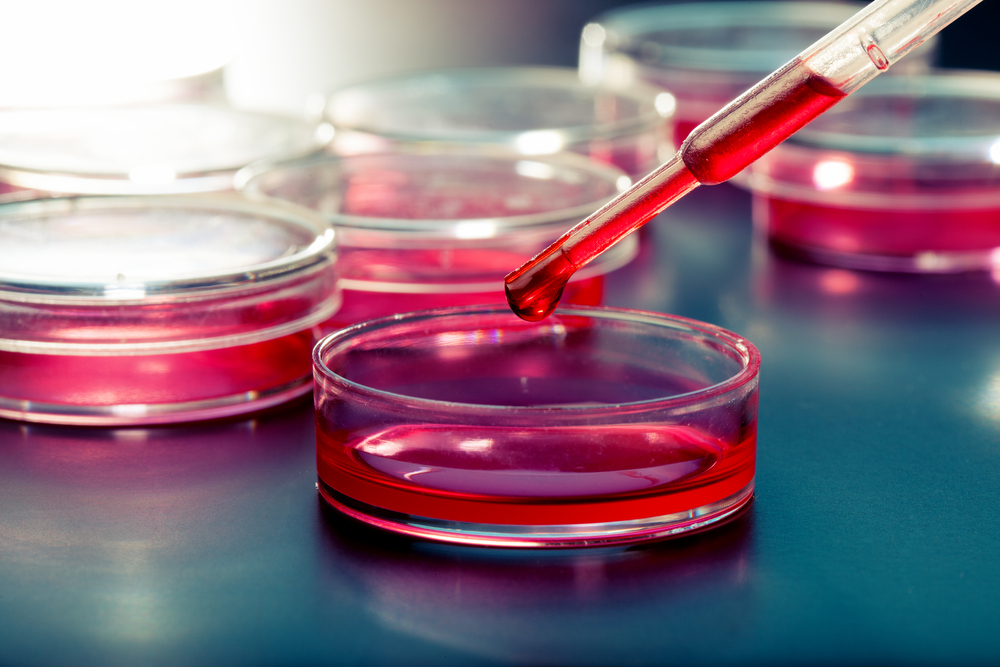Working Muscle Grown from Skin Sample, Raising Hopes for Regenerative Treatments

Researchers have succeeded in growing working muscle tissue from a skin sample — a feat that until recently was viewed as science fiction.
Although the lab-grown muscle was not as strong as those in the body, the advance opens up for new approaches to tissue regeneration in patients with muscular dystrophy and other conditions, the research team at Duke University said after successfully transplanting lab-grown muscle into mice.
Being able to grow muscle from skin cells also allows researchers to build individualized models when studying these diseases and developing new treatments.
The research team described the process and its outcome in the article, “Engineering human pluripotent stem cells into a functional skeletal muscle tissue,” published in the journal Nature Communications.
The key to the team’s success was the method of forcing cells to backtrack from mature skin cells into so-called pluripotent stem cells.
“It’s taken years of trial and error, making educated guesses and taking baby steps to finally produce functioning human muscle from pluripotent stem cells,” Lingjun Rao, PhD, lead study author, said in a press release.
In 2015, the team published its efforts in growing muscle tissue from a muscle tissue sample — a significant step on the way to the current achievement.
Back then, the researchers isolated cells called myoblasts — intermediates between stem cells and mature muscle cells — from the muscle biopsy. These cells grew, first in a lab-dish and then in a three-dimensional matrix, which allowed them to align and form muscle tissue.
Starting from skin cells was a similar process, but it had to start with making stem cells from the skin. The team then treated the cells with various molecules to force their maturation into muscle cells.
“Starting with pluripotent stem cells that are not muscle cells, but can become all existing cells in our body, allows us to grow an unlimited number of myogenic [muscle] progenitor cells,” said Nenad Bursac, PhD, a professor of biomedical engineering at Duke and senior author of the study.
“These progenitor cells resemble adult muscle stem cells called ‘satellite cells’ that can theoretically grow an entire muscle starting from a single cell.”
When these cells were grown in a three-dimensional scaffold, they too started aligning to form muscles. As time passes, the tissue became increasingly similar to normal muscle.
Researchers showed that the muscle responded to electrical and biochemical signals, similar to those elicited by motor neurons, making the muscle contract when stimulated. However, it did not become as strong as muscles in the body.
Other research teams have earlier attempted to do the same thing, but failed — a situation the Duke team ascribed to their specific methods.
The big difference
“What made the difference are our unique cell culture conditions and 3-D matrix, which allowed cells to grow and develop much faster and longer than the 2-D culture approaches that are more typically used,” said Rao.
To test whether the lab-grown muscle could be used for regenerative purposes, researchers transplanted it into the hind legs of adult mice. During three weeks after surgery, the transplanted muscle became increasingly integrated into the mice tissue, with new blood vessels growing to support it with oxygen.
The muscle continued to contract and signal as normal muscle tissue during this time.
While the tissue grown from a muscle sample in 2015 was stronger than the skin-derived muscle, researchers said skin cells have several benefits.
For instance, satellite cells, which made up a large part of the muscle grown from skin, are key for tissue repair and regeneration. Muscle grown from a muscle sample held few such cells.
Using stem cells also allows researchers to grow far more cells than what can be obtained from a muscle tissue sample.
Moreover, since the hope is for the method to be used in patients with muscular dystrophy, a skin sample is a better way of going forward, researchers argued.
“The prospect of studying rare diseases is especially exciting for us,” said Bursac.
“When a child’s muscles are already withering away from something like Duchenne muscular dystrophy, it would not be ethical to take muscle samples from them and do further damage. But with this technique, we can just take a small sample of non-muscle tissue, like skin or blood, revert the obtained cells to a pluripotent state, and eventually grow an endless amount of functioning muscle fibers to test.”
In addition to its use in regenerative medicine — where the technique may be used to repair localized damage or be used together with gene therapies — the method allows researchers to build new models of muscle disease.
Such individualized models would capture the genetic flaw of each patient, allowing researchers to study disease processes and test treatments for effectiveness.
The team is now working to improve the strength of the lab-grown muscle. They also plan to develop models for muscle diseases.






